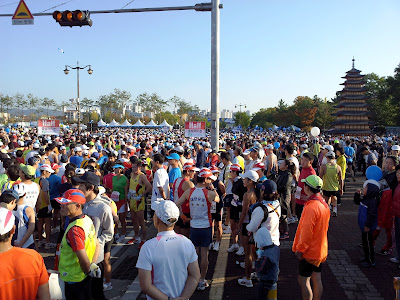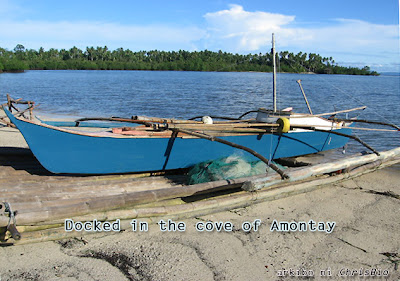Dr. Yong Larrazabal recently wrote an article for SunStar Cebu about his feat at the Gyeongju International Marathon in South Korea last October 16. It was a notable achievement for him, having set a new personal record of 3:45, beating his previous 3:47 at the Seoul International Marathon in March last year.
He was right about running in Korea; the routes are mostly flat and the weather is relatively cool in the fall and spring, making these seasons all cramped with weekend marathons. And he was right about Gyeongju too. The city is a perfect venue for running, especially for foreigners; it features a rich infusion of history and culture. And unlike metropolitan Seoul, it affords an urban-yet-laidback lifestyle. It was the capital of the ancient South Korean dynasty of Silla – an age-old prominence that gave the city its rightful entitlement as an “open museum”
But he wasn’t right when he said he was the only Filipino in the race. I was there too, however, obscured among the thousands of eager runners - restless and enthusiastic as the gun time approaches. And I wore the same tiny Philippine flag I had on proudly at the Incheon International Marathon last year. I took time to buy felt papers of yellow, red, blue, and white at the university store, cut them into shapes and glued the pieces together to make that gallant symbol of my pride.
I guess Dr. Yong and I hinged on the same wave of feeling of being the only Filipino among the 10,000 runners coursing through the downtown, along ancient historical relics, rice fields, and highways. But unlike me, Dr. Yong is one distinguished Filipino runner/eye surgeon back home. I could liken him to the celebrated Japanese runner/novelist Haruki Murakami whose book What I Talk About When I Talk About Running has greatly inspired me to take running as my life’s metaphor. And he has already been trailing clouds of reputed glory both in running and in his medical practice. He and his wife, the renowned Donna Cruz, have been running together in several marathons both local and abroad, making them a celebrity running couple whose merits as regular runners are measures of their métier for the sport that tests discipline and endurance.
In Korea, road running is also a favorite pastime - Koreans being avid about wellness and sports. Their fondness for marathons inspire admiration – you see a bunch of spruced up girls in pretty ponytails, a couple at their senescence, a paraplegic on a wheelchair, a father and a daughter pacing alongside – all weathering the distance with dauntless spirits. But these all make sense in a health-conscious society and a sport that bears significance in the Korean history.
Daereungwon Tomb Complex: Gyeongju's famous landmark
Anapji Pond
1936 Berlin Olympics: Korean marathoner Sohn Kee-Chung took the gold. But the country was under the rule of the Japanese Empire and so the flag on his uniform wasn’t Korea’s and Japan had the official gold credit. Expressing his dissent to the orders of the colonial government, Sohn refused to sign his name in Japanese characters and bowed his head in protest at the awarding ceremony. When Dong-a Ilbo, one of the major newspapers in Korea whose nationalist founder Kim Sung-soo became the country’s vice-president in 1951, published a photographed of Sohn with a blotted out image of the Japanese flag on his uniform, the colonial government was infuriated. The publication was suspended for nine months and eight people affiliated with the newspaper were imprisoned. Sohn later become a heroic symbol of nationalism and patriotic sentiments.
While we have nothing so monumental and profound a historical account in marathon as the Koreans do, running in a foreign country brings a patriotic wave. I wear my flag conspicuously above my race bib – being certain that however obscured runner that I was, I have pattered dusts of Filipino resplendence on this part of the world. And that is the best part of the race.
Now I’m back to my corner in Iksan City, where I work as a professor, contemplating on a selection from a number of marathon schedules in the spring time. By then, I’d be in Gyeongju serving a new academic ground in a city that brings everyone to a travel back in time. Dr. Yong might be coming back for the Seoul International Marathon in four months. I wish to see him at the finish line and cheer for a highly esteemed fellowman and a former boss.








